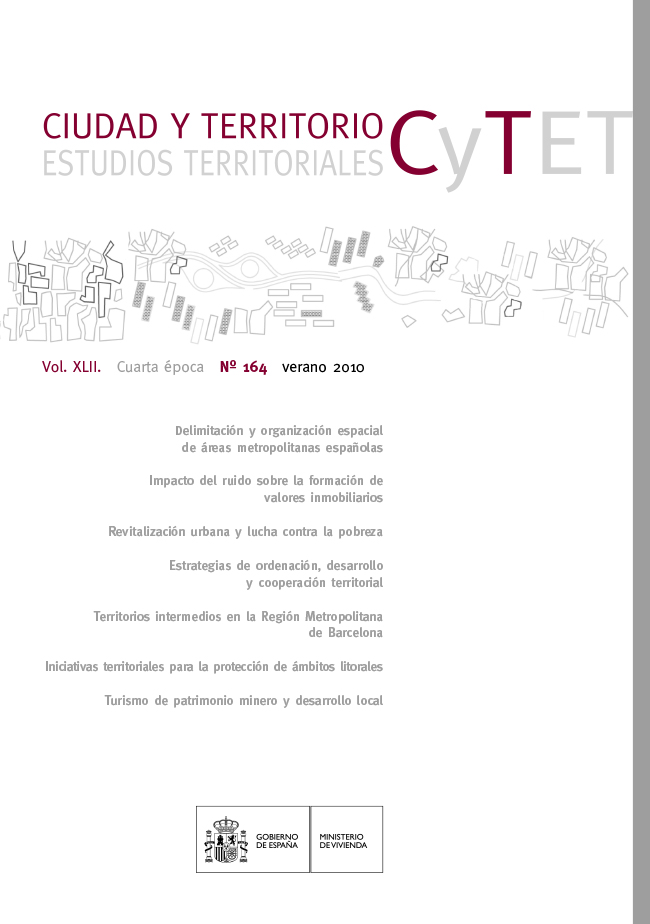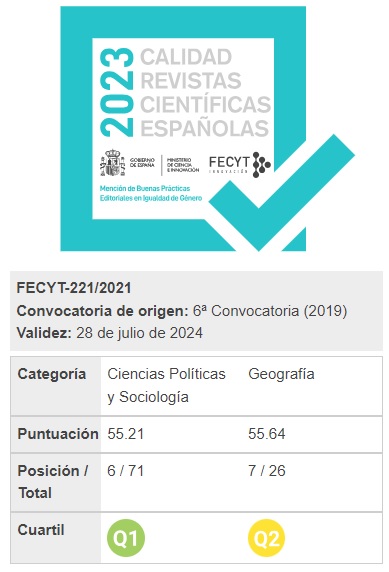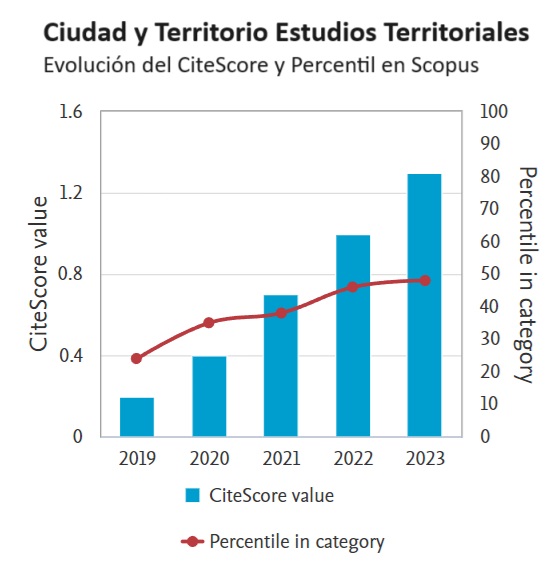The defi nition and spatial organization of Spanish metropolitan areas: thoughts upon residence-work mobility
Keywords:
Áreas metropolitanas, movilidad, dinámica espacial, EspañaAbstract
The paper aims to air some issues relevant to Spanish metropolitan areas by an analysis of
commuting. This variable, as international experience of the same has made patent, is a powerful
tool both for the defi ning of metropolitan areas and the description and explanation of their
functional and spatial processes. Three directly linked aspects are gone into by the author. First
the main results of the defi nition process of metropolitan areas are laid out, these being basically
the number, dimension and hierarchical organization of the Spanish metropolitan system then
second, different types of metropolitan spatial structures are presented. Finally an analytical
approach to the diversity and heterogeneous character of Spanish metropolitan areas is suggested
along with the establishing of a tentative sequence of phases of metropolitan evolution and
gathering complexity in keeping with their scale of commuting the punctual characteristics of this
The author concludes that the present-day Spanish city is metropolitan, hierarchically ranked,
heterogeneous and diverse, whose managing must then fi t this reality.
Downloads
Downloads
Published
How to Cite
Issue
Section
License
Copyright (c) 2010 J. M. Feria Toribio

This work is licensed under a Creative Commons Attribution-NonCommercial-NoDerivatives 4.0 International License.
Considering the provisions of the current legislation on Intellectual Property, and in accordance with them, all authors publishing in CyTET give -in a non-exclusive way and without time limit- to the Ministry of Transport, Mobility and Urban Agenda the rights to disseminate, reproduce, communicate and distribute in any current or future format, on paper or electronic, the original or derived version of their work under a Creative Commons Attribution-NonCommercial-NoDerivative 4.0 license International (CC BY-NC-ND 4.0), as well as to include or assign to third parties the inclusion of its content in national and international indexes, repositories and databases, with reference and recognition in any case of its authorship.
In addition, when sending the work, the author(s) declares that it is an original work in which the sources that have been used are recognized, committing to respect the scientific evidence, to no longer modify the original data and to verify or refute its hypothesis. Author(s) also declare that the essential content of the work has not been previously published nor will it be published in any other publication while it is under evaluation by CyTET; and that it has not been simultaneously sent to another journal.
Authors must sign a Transfer of Rights Form, which will be sent to them from the CyTET Secretariat once the article is accepted for publication.
With the aim of promoting the dissemination of knowledge, CyTET joins the Open Journal Access (OA) movement and delivers all of its content to various national and international indexes, repositories and databases under this protocol; therefore, the submission of a work to be published in the journal presupposes the explicit acceptance by the author of this distribution method.
Authors are encouraged to reproduce and host their work published in CyTET in institutional repositories, web pages, etc. with the intention of contributing to the improvement of the transfer of knowledge and the citation of said works.








 Enlace a CyTET en Linkedin
Enlace a CyTET en Linkedin